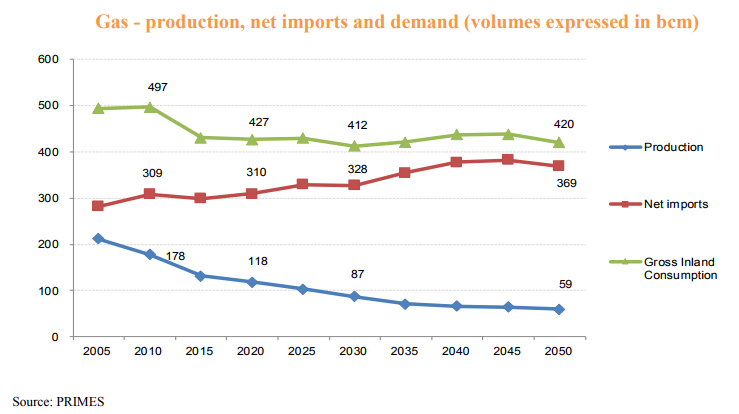Baku, Azerbaijan, July 8
By Dalga Khatinoglu – Trend:
Iran has prioritized gas export to neighbours and India, an Iranian top official said.
"Europe is not Iran’s option for gas export in mid-term, because it has been oversupplied," Amir Hossein Zamani-Nia, Deputy of Oil Minister for International Affairs and Commerce told IRNA July 7.
He added that Iran would increase gas output to 1 billion cubic meters per day (bcm/d) by the end of current fiscal year (March 20, 2018) and based on 6th National Development Plan (2017-2022), the country should export 80 bcm/yr of gas, of which 50 bcm/yr is projected to be delivered to neighbours.
Zamani-Nia said that the remained surplus gas (30 bcm/yr) can be exported to Europe in long-term.
Currently, Iran has agreements with Turkey, Pakistan, Iraq and Oman to supply 46 bcm/yr of gas to these countries. During last year, Iran exported 8.5 bcm of gas to Turkey, but it started to export gas to Iraq in restricted volume last month as well.
Iran’s gross gas output reached 285 bcm last fiscal year (ended March 20), of which 226 bcm was commercial gas. It plans to increase this volume to above 400 bcm/yr by 2022 by commissioning all 24 phases of South Pars gas field. Last year the field produced 155 bcm/yr, but it is projected to reach 260 bcm/yr in four years.
According to Iran’s Parliament Research Center’s report, released in June, the gas export to far markets (with more than 3,000 km distance from South Pars gas field), especially Europe is unprofitable, because the net profit of exporting gas will be at most $0.08/mcm and zero in most cases.
According to European Commission’s estimation, up to 2020, the consumption of gas in Europe is expected to remain stable at around 430 bcm in gross inland terms. Post 2020, a slight decrease in gross inland consumption of gas (412 bcm in 2030) is projected, as well as further reductions in indigenous production of gas.

Net import dependency of natural gas registers an increase as domestic gas production continues its downward trend. The imported volumes of gas are projected to increase between 2015 and 2040 and then to stabilise in the long term, 15% above the 2010 net import level (from 309 bcm in 2010 to 369 bcm in 2050).
Charles Ellinas, CEO of the Cyprus-based energy consultancy e-CNHC, told Trend May 23 that gas prices in Europe are too low to make gas export prospects for Iran commercially viable.
Ellinas, who is also a non-resident senior fellow with the Atlantic Council and has over 35 years of experience in the oil and gas sector, added that right now gas prices in Europe are under $5/British Thermal Unit (mmBTU) and are forecast to remain in the range between of $5/mmBTU and $6/mmBTU in the long term.
Meanwhile, the price of Iranian gas supplied to Turkey was $5.8/mmBTU in 2016, Ellinas said.
"At such price by the time it reaches Europe it will be over $7/mmBTU, which would be too high to attract buyers," the analyst said.
Iran should firstly construct a 1,800-km pipeline (Igat9) with 17 compressors and raise at least $6-8 billion worth of investment to connect the South Pars field to its north-western regions to be able to export gas to the EU through the Southern Gas Corridor, or a new pipeline.
Coming to exporting LNG, Iran has an LNG project, half done, with 10.4 million tons per year capacity, but it needs at least $6-9 billion of investment to become operational.





